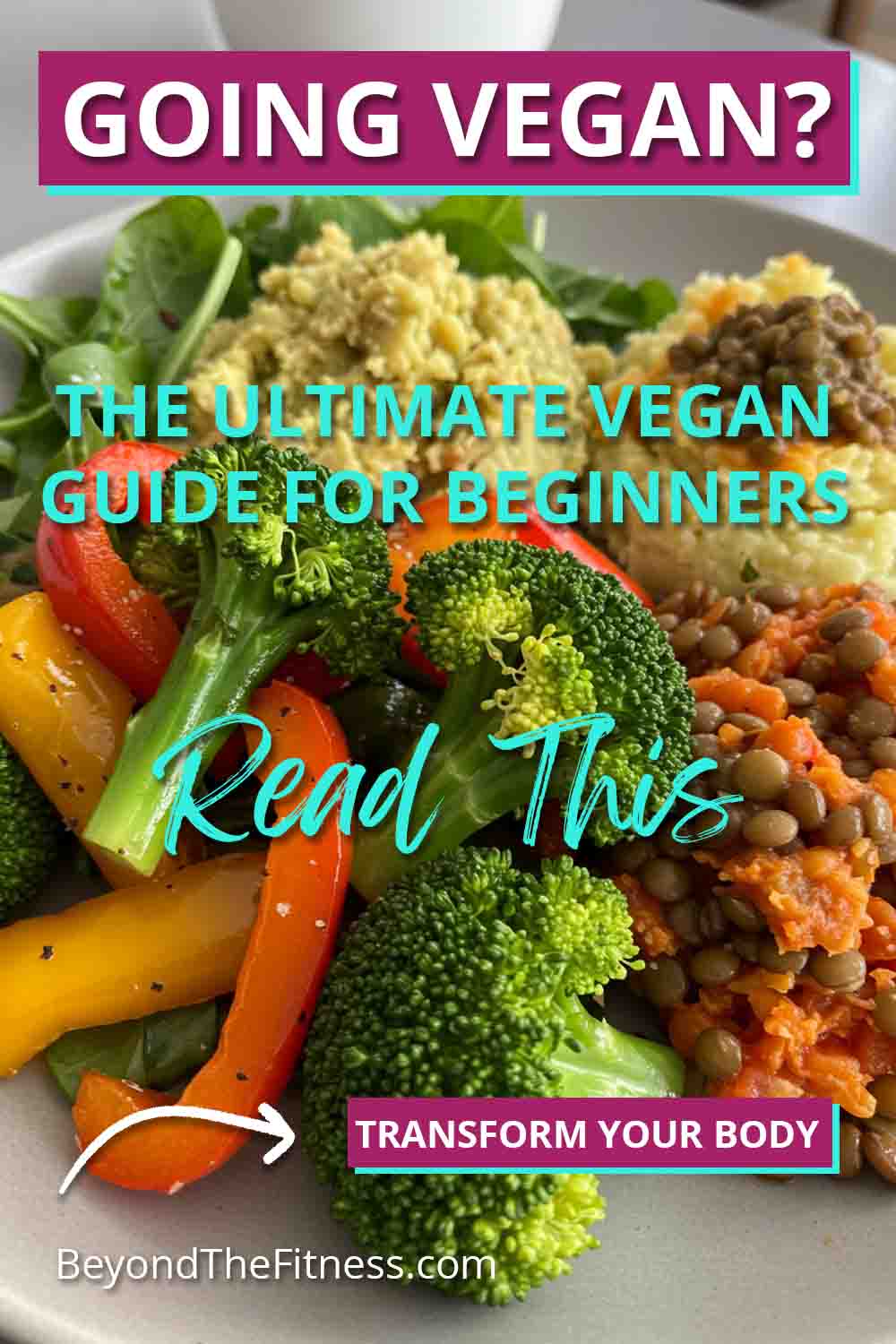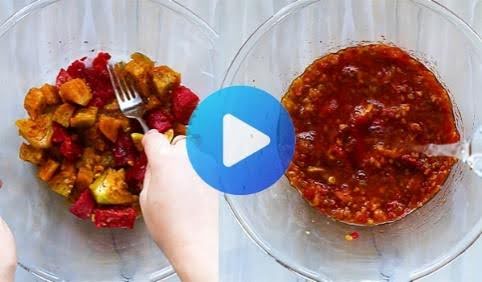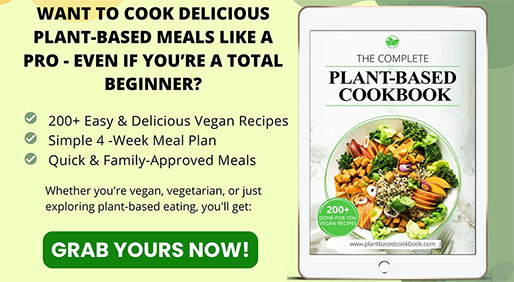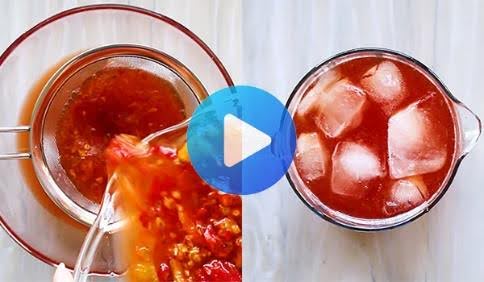Thinking about going vegan can feel like a huge step. Maybe you’re curious about the health benefits you’ve heard about, or perhaps you’re looking for a way to eat that aligns better with your values or supports your fitness and weight loss goals. Whatever your reason, I’m here to tell you that starting a vegan journey doesn’t have to be complicated or overwhelming. As someone who focuses on fitness and nutrition, I’ve seen how plant-based eating can fuel bodies and help people feel their best. This guide is designed to break it all down for you, step by step, with easy tips and even simpler recipes to get you started.
What Does Being Vegan Mean Anyway?
Let’s start with the basics. Being vegan means choosing not to eat any products that come from animals. This is different from being vegetarian. Most vegetarians avoid meat, poultry, and fish, but they might still eat dairy products (like milk and cheese) and eggs. Vegans take it a step further and avoid all animal products, including meat, poultry, fish, dairy, eggs, and often honey.
People choose veganism for lots of reasons.
Insider Tip: Enjoying Healthy and Flavorful Plant-Based Dishes with The Complete Plant Based Recipe Cookbook
- Health: Many studies suggest plant-based diets can be great for heart health, managing weight, and lowering the risk of certain diseases. Eating more fruits, vegetables, whole grains, and legumes naturally increases your fiber and nutrient intake.
- Ethics: Some people feel strongly about animal welfare and choose veganism to avoid contributing to industries they don’t support.
- Environment: Raising animals for food uses a lot of resources like land and water. Some people go vegan to reduce their environmental footprint.
For me, as a fitness consultant, the health aspect is fascinating. A well-planned vegan diet can absolutely provide all the energy and nutrients you need to power through workouts, recover effectively, and manage your weight.
Taking the First Steps: How to Transition
You don’t have to change everything overnight unless you want to. Many people find a gradual approach works best.
- Start Small: Maybe begin with Meatless Mondays, where you eat vegan for just one day a week. Or try swapping out one animal product at a time. For example, switch from cow’s milk to almond milk or soy milk in your coffee and cereal. This week, try that. Next week, maybe swap ground beef for lentils in your pasta sauce.
- Focus on Adding, Not Just Subtracting: Instead of thinking about what you can’t eat, focus on all the amazing plant foods you can add to your meals. Explore new vegetables, try different types of beans, experiment with grains like quinoa or farro. Make your plates colorful and exciting.
- Veganize Your Favorites: You probably don’t have to give up your favorite meals entirely. Pizza can be made with vegan cheese and loaded with veggies. Burgers can be made with plant-based patties. Tacos are amazing with seasoned black beans or lentils instead of meat. Get creative.
- Read Labels: This becomes important as you cut out more animal products. Milk ingredients (whey, casein), egg, gelatin, and sometimes honey can hide in unexpected places like breads, sauces, and snacks. Learning to quickly scan ingredient lists is a helpful skill. Look for “vegan” certifications on packaging, too.
Fueling Your Body: Vegan Nutrition Essentials
This is super important, especially if you’re active or have specific health goals like weight loss. You need to make sure you’re getting all the necessary nutrients. The good news is, you absolutely can on a vegan diet, you just need to know where to look.
- Protein Power: This is often the first question people ask. “Where do you get your protein?” Trust me, plants have plenty. Protein is vital for building and repairing muscles after exercise, and it helps you feel full, which is great for weight management.
- Top Sources: Lentils, chickpeas, black beans, kidney beans (all legumes are great), tofu, tempeh, edamame (soybeans), seitan (made from wheat gluten), quinoa, nuts (almonds, walnuts, peanuts), seeds (chia, flax, hemp, pumpkin), and even some vegetables like broccoli and spinach contribute.
- Tip: Aim to include a good protein source in every meal and snack.
- Iron for Energy: Iron carries oxygen in your blood, giving you energy. Low iron can lead to fatigue, which definitely won’t help your workouts. Women, in particular, need to be mindful of iron intake.
- Top Sources: Lentils, chickpeas, beans, tofu, cashew nuts, chia seeds, ground linseed, hemp seeds, pumpkin seeds, kale, dried apricots and figs, quinoa, and fortified breakfast cereals.
- Tip: Plant-based iron (non-heme iron) isn’t absorbed as easily as iron from meat (heme iron). You can boost absorption by pairing iron-rich foods with Vitamin C sources. Think beans with salsa, lentils with tomatoes, or spinach salad with orange slices. Avoid drinking tea or coffee with meals, as they can hinder iron absorption.
- Calcium for Strong Bones: We all know calcium is key for bone health.
- Top Sources: Fortified plant milks (soy, almond, oat – check the label), calcium-set tofu, leafy greens like kale and collard greens (though spinach has calcium, it’s not absorbed as well), broccoli, almonds, tahini (sesame seed paste).
- Tip: Many plant milks have as much or more calcium than dairy milk. Just shake the container well.
- The Crucial Vitamin B12: This is the one nutrient that’s generally not found reliably in plant foods. B12 is essential for nerve function and making red blood cells. A deficiency can cause serious health problems, including fatigue and nerve damage.
- Top Sources: Fortified foods are your best bet. This includes many plant milks, breakfast cereals, nutritional yeast, and some vegan meat alternatives. Check labels to see if they’re fortified and how much they contain.
- Tip: I strongly recommend that all vegans take a Vitamin B12 supplement or consistently eat enough fortified foods to meet their daily needs. Don’t skip this one. It’s easy to supplement and very important.
- Omega-3 Fats: These are healthy fats important for brain health and reducing inflammation.
- Top Sources: Ground flaxseeds, chia seeds, hemp seeds and oil, walnuts. Algal oil supplements are also a direct source of DHA and EPA, the types of omega-3s often highlighted for health benefits.
- Tip: Sprinkle ground flax or chia seeds on oatmeal, smoothies, or salads daily.
- Vitamin D (The Sunshine Vitamin): Important for bone health and immune function.
- Top Sources: Your body makes Vitamin D from sunlight exposure. However, depending on where you live (hello, Canadian winters), your skin tone, and sunscreen use, you might not get enough. Fortified plant milks, some mushrooms exposed to UV light, and supplements are other sources.
- Tip: Many people (vegan or not) benefit from a Vitamin D supplement, especially during darker months.
- Zinc: Needed for immune function and cell growth.
- Top Sources: Beans, chickpeas, lentils, tofu, walnuts, cashew nuts, chia seeds, ground linseed, hemp seeds, pumpkin seeds, wholemeal bread, and quinoa.
- Tip: Soaking or sprouting beans and grains can improve zinc absorption.
- Iodine: Important for thyroid function, which regulates metabolism.
- Top Sources: Iodized salt is a common source. Sea vegetables like nori and kelp contain iodine, but amounts can vary a lot and sometimes be excessive, so use them moderately. Some plant milks might be fortified.
- Tip: Using iodized salt in cooking is an easy way to help meet needs, but don’t overdo the salt.
Planning meals with these nutrients in mind will help you feel energized, support your fitness goals, and contribute to healthy weight management by keeping you full and satisfied.
Stocking Your Vegan Kitchen: Pantry Staples
Having the right ingredients on hand makes vegan cooking much easier and less stressful. You don’t need anything too fancy to start.
- Grains: Oats (rolled oats are versatile), brown rice, quinoa, whole-wheat pasta, whole-grain bread or tortillas.
- Legumes (Canned or Dried): Lentils (red, brown, green), chickpeas, black beans, kidney beans. Canned are convenient; dried are cheaper but need soaking/cooking.
- Nuts and Seeds: Almonds, walnuts, cashews (great for creamy sauces), peanuts/peanut butter, chia seeds, flaxseeds (buy ground or grind them yourself), pumpkin seeds, sunflower seeds, tahini (sesame paste).
- Fruits and Vegetables: Load up. Buy fresh, frozen, or canned.
- Fresh: Whatever is in season. Bananas, apples, berries, oranges, spinach, kale, lettuce, tomatoes, onions, garlic, carrots, broccoli, bell peppers, sweet potatoes.
- Frozen: Great for convenience and often just as nutritious. Berries, peas, corn, spinach, broccoli florets, mixed vegetables. Perfect for smoothies and stir-fries.
- Canned: Tomatoes (diced, crushed, paste), beans, corn. Look for low-sodium options.
- Plant Milks: Soy, almond, oat, cashew, rice milk. Unsweetened versions are best for versatility. Try a few to find your favorite.
- Tofu and Tempeh: Excellent protein sources. Buy firm or extra-firm tofu for stir-fries and scrambles. Tempeh is fermented soybeans with a nutty flavor.
- Healthy Fats: Olive oil, avocado oil, coconut oil (use sparingly), avocados.
- Flavor Boosters:
- Nutritional Yeast: Often called “nooch”. It has a cheesy, nutty flavor and is great sprinkled on pasta, popcorn, or tofu scrambles. It’s often fortified with B12.
- Soy Sauce or Tamari: Tamari is typically gluten-free. Liquid aminos are another option.
- Vinegars: Apple cider vinegar, balsamic vinegar, red wine vinegar.
- Herbs and Spices: Garlic powder, onion powder, cumin, chili powder, paprika, oregano, basil, cinnamon, turmeric. Salt and pepper. Fresh herbs like cilantro and parsley add brightness.
- Sweeteners (Use in moderation): Maple syrup, agave nectar, date syrup.
With these staples, you can whip up tons of simple vegan meals.
Easy Vegan Meal Ideas: Keeping It Simple
You don’t need complex recipes for everyday eating. Focus on simple combinations.
- Breakfast:
- Oatmeal: Cook rolled oats with water or plant milk. Top with berries, banana slices, nuts, or seeds.
- Tofu Scramble: Crumble firm tofu and sauté with veggies like onions, peppers, and spinach. Season with turmeric (for color), garlic powder, and nutritional yeast.
- Smoothie: Blend plant milk, a scoop of vegan protein powder (optional), spinach (you won’t taste it), frozen banana or berries, and a spoonful of nut butter or chia seeds.
- Toast: Whole-grain toast topped with avocado and everything bagel seasoning, or peanut butter and banana slices.
- Lunch:
- Big Salad: Start with greens (lettuce, spinach, kale). Add chickpeas or black beans, chopped veggies (cucumber, tomato, carrots, peppers), maybe some quinoa or nuts/seeds. Top with a simple vinaigrette (olive oil, vinegar, salt, pepper).
- Lentil Soup: Hearty, filling, and easy to make a big batch for leftovers. (See recipe below).
- Veggie Wrap: Spread hummus on a whole-wheat tortilla. Fill with lettuce, shredded carrots, cucumber, bell peppers, and maybe some baked tofu strips or chickpeas.
- Leftovers: Cook extra dinner the night before for an easy lunch.
- Dinner:
- Pasta Night: Whole-wheat pasta with marinara sauce. Bulk it up by adding sautéed mushrooms, zucchini, onions, or lentils to the sauce. Sprinkle with nutritional yeast.
- Stir-Fry: Sauté cubed tofu or tempeh with lots of colorful veggies (broccoli, peppers, carrots, snap peas) in a simple soy sauce-based sauce. Serve over brown rice or quinoa.
- Chili: Bean chili is classic comfort food. Use kidney beans, black beans, diced tomatoes, onions, peppers, and chili spices. Serve with brown rice or cornbread.
- Loaded Sweet Potatoes: Bake sweet potatoes until soft. Split open and top with black beans, corn, salsa, and avocado.
- Sheet Pan Meal: Toss chopped veggies (broccoli, potatoes, peppers, onions) and chickpeas or cubed tofu with oil and spices. Roast on a baking sheet until tender and slightly browned.
- Snacks: Keep simple snacks handy to avoid getting overly hungry.
- Apple slices with peanut butter.
- A handful of almonds or walnuts.
- Baby carrots or cucumber slices with hummus.
- Vegan yogurt with berries.
- Rice cakes with avocado.
- A piece of fruit like a banana or orange.
- Edamame (steamed or roasted).
Super Simple Vegan Recipes to Get You Started
These recipes use common ingredients and require minimal cooking skills. They are perfect for beginners.
1. Simple Lentil Soup
This soup is warming, nutritious, and very forgiving.
Ingredients:
- 1 tablespoon olive oil
- 1 medium onion, chopped
- 2 carrots, chopped
- 2 celery stalks, chopped
- 2 cloves garlic, minced
- 1 cup brown or green lentils, rinsed
- 6 cups vegetable broth (low sodium preferred)
- 1 teaspoon dried thyme (or Italian seasoning)
- Salt and pepper to taste
Instructions:
- Heat the olive oil in a large pot or Dutch oven over medium heat.
- Add the onion, carrots, and celery. Cook until softened, about 5-7 minutes.
- Add the minced garlic and cook for another minute until fragrant.
- Stir in the rinsed lentils, vegetable broth, and dried thyme.
- Bring the soup to a boil, then reduce the heat, cover, and simmer for 30-40 minutes, or until the lentils are tender.
- Season with salt and pepper to your liking.
- Serve hot. It’s even better the next day.
2. Quick Chickpea Salad Sandwich Filling
This is like a vegan tuna or chicken salad. Great for sandwiches or wraps.
Ingredients:
- 1 can (15 ounces) chickpeas, rinsed and drained
- 1/4 cup vegan mayonnaise (many brands available)
- 1 celery stalk, finely chopped
- 2 tablespoons finely chopped red onion (or green onion)
- 1 tablespoon Dijon mustard (optional)
- Salt and pepper to taste
Instructions:
- In a medium bowl, mash the chickpeas with a fork or potato masher until flaky but still slightly chunky.
- Add the vegan mayonnaise, chopped celery, red onion, and Dijon mustard (if using).
- Stir everything together until well combined.
- Season with salt and pepper.
- Serve on bread, in a wrap, with crackers, or on top of salad greens.
3. Easy Tofu Scramble
A breakfast classic that’s ready in minutes.
Ingredients:
- 1 tablespoon olive oil (or water/broth for oil-free)
- 1/2 block (about 7-8 ounces) firm or extra-firm tofu, pressed and crumbled
- 1/4 cup chopped onion
- 1/4 cup chopped bell pepper (any color)
- 1/4 teaspoon turmeric (for yellow color)
- 1/8 teaspoon garlic powder
- Salt and pepper to taste
- 1-2 tablespoons nutritional yeast (optional, for cheesy flavor)
- Handful of spinach (optional)
Instructions:
- Heat oil (or water/broth) in a non-stick skillet over medium heat.
- Add onion and bell pepper. Cook until softened, about 3-4 minutes.
- Add the crumbled tofu, turmeric, garlic powder, salt, and pepper. Stir well to coat the tofu. Cook for 5-7 minutes, stirring occasionally, until heated through.
- If using nutritional yeast and spinach, stir them in during the last minute of cooking, until the spinach wilts.
- Serve immediately. Great with toast or potatoes.
4. 5-Minute Berry Smoothie
Perfect for a quick breakfast or post-workout snack.
Ingredients:
- 1 cup unsweetened plant milk (almond, soy, oat)
- 1 cup frozen mixed berries
- 1/2 ripe banana (fresh or frozen)
- 1 tablespoon chia seeds or ground flaxseeds (optional, for omega-3s)
- 1 scoop vegan protein powder (optional)
Instructions:
- Combine all ingredients in a blender.
- Blend on high speed until smooth and creamy. Add a little more plant milk if it’s too thick.
- Pour into a glass and enjoy right away.
5. Simple Black Bean Burgers
Way easier than you think, and much healthier than store-bought sometimes.
Ingredients:
- 1 can (15 ounces) black beans, rinsed and drained
- 1/2 cup cooked brown rice (or breadcrumbs)
- 1/4 cup finely chopped onion
- 1 clove garlic, minced
- 1/2 teaspoon cumin
- 1/4 teaspoon chili powder
- Salt and pepper to taste
- 1-2 tablespoons flour (whole wheat, oat, or all-purpose), if needed for binding
- Oil for cooking (optional)
Instructions:
- In a large bowl, mash the black beans well with a fork or potato masher. Leave some texture.
- Add the cooked brown rice (or breadcrumbs), chopped onion, minced garlic, cumin, chili powder, salt, and pepper. Mix everything together thoroughly.
- If the mixture seems too wet to form patties, add a tablespoon or two of flour until it holds together better.
- Form the mixture into 3-4 patties.
- To cook, you can either pan-fry them in a lightly oiled skillet over medium heat for about 4-5 minutes per side until browned and heated through, or bake them on a lined baking sheet at 375°F (190°C) for about 10-12 minutes per side.
- Serve on buns with your favorite toppings like lettuce, tomato, onion, avocado, and vegan mayo or ketchup.
Eating Out and Handling Social Events
Going vegan doesn’t mean you have to stop eating out or seeing friends.
- Restaurant Savvy: Many cuisines are naturally vegan-friendly. Think Italian (pasta with marinara, veggie pizzas without cheese), Mexican (bean burritos or tacos, hold the cheese and sour cream, ask for guacamole), Thai or Vietnamese (veggie curries, noodle dishes, specify no fish sauce), Indian (lentil dals, chickpea curries, ask for no ghee/butter or cream), and Middle Eastern (falafel, hummus, baba ghanoush). Check menus online beforehand or call ahead. Don’t be afraid to ask questions or request modifications.
- Social Gatherings: If you’re going to a party or potluck, offer to bring a vegan dish you know you’ll enjoy. This takes the pressure off the host and ensures you have something delicious to eat. Most hosts appreciate the contribution. If it’s a dinner party, let the host know your dietary needs politely and well in advance. Frame it simply, like “Just wanted to let you know I’m eating vegan now, but please don’t go to any extra trouble for me. I’m happy to bring something or eat the veggie sides.”
Veganism, Fitness, and Weight Management
Let’s circle back to how this way of eating connects to fitness and weight goals. A whole-foods, plant-based diet is naturally rich in carbohydrates for energy, provides adequate protein for muscle repair (if planned well), and is packed with vitamins, minerals, and antioxidants that help with recovery and overall health.
You Might Be Interested In: Exploring Delicious Vegan Recipes With This Cookbook
For weight loss, vegan diets based on whole foods (fruits, vegetables, whole grains, legumes) tend to be lower in calorie density and higher in fiber compared to diets high in meat and dairy. Fiber helps you feel full and satisfied, which can make it easier to manage your calorie intake without feeling deprived. Just remember, “vegan” doesn’t automatically mean “healthy” or “low calorie”. Vegan cookies, chips, and processed foods still exist and should be enjoyed in moderation, just like their non-vegan counterparts. Focusing on whole or minimally processed plant foods is key for reaping the health and weight management benefits.
Common Beginner Mistakes (And How to Avoid Them)
- Not Eating Enough: Plant foods are often less calorie-dense than animal products. Make sure you’re eating sufficient portions to meet your energy needs, especially if you’re active. Listen to your hunger cues.
- Living on Processed Vegan Junk Food: While convenient, relying too heavily on processed vegan meats, cheeses, and snacks can mean missing out on nutrients and consuming excess sodium, unhealthy fats, and additives. Focus on whole foods most of the time.
- Forgetting B12: I mentioned it before, but it’s worth repeating. Ensure a reliable source of Vitamin B12 through fortified foods or a supplement.
- Lack of Planning: Especially in the beginning, failing to plan meals or snacks can lead to grabbing less healthy options or feeling frustrated. Spend a little time each week thinking about meals and making a grocery list.
- Not Drinking Enough Water: Hydration is always important, especially when increasing your fiber intake.
Listen to Your Body
Your vegan journey is unique to you. Pay attention to how you feel. Notice your energy levels, digestion, workout performance, and recovery. If something feels off, reassess your nutrient intake. Maybe you need more iron-rich foods, more calories, or perhaps that B12 supplement. Be patient with yourself, learn as you go, and don’t aim for perfection. Every plant-based meal you choose makes a difference. You’ve got this.
Related YouTube Video
Final Thoughts
Starting a vegan lifestyle is a journey of discovery. It’s about exploring new foods, learning about nutrition in a different way, and finding what works best for your body and your goals. Whether you’re focused on improving your fitness, managing your weight, or other personal reasons, a well-planned vegan diet can be incredibly rewarding and sustainable. Remember to be kind to yourself, start simple, focus on whole foods, and don’t forget that B12. Enjoy the process and the delicious food along the way.







